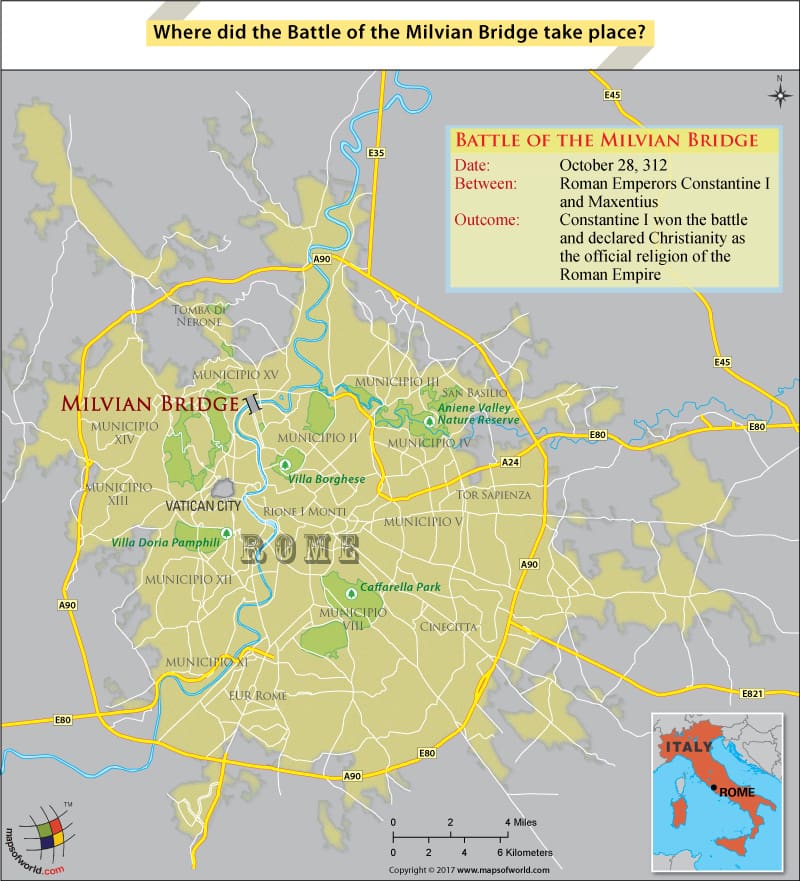Where did the Battle of the Milvian Bridge take place?
The Battle of the Milvian Bridge was fought on October 28th, 312, and is often referred to as the battle that helped establish Christianity. After years of dispute, Roman Emperors Constantine and Maxentius engaged in a battle with their men at the Milvian Bridge, outside Rome. The battle was won by Constantine I and helped establish him as the sole and undisputed ruler of the Roman Empire. Constantine the Great, later declared Christianity as the official religion of the empire. This was due to, in a great measure, a prophetic dream that he saw on the eve of this battle. In this sense, the Battle of Milvian Bridge was a great victory for Christianity.
The Tetrarchy established by Roman Emperor Diocletian, towards the end of the third century was on the verge of collapse. By AD 305, when Diocletian decided to abdicate his throne, his successors were engaged in a bitter power struggle. Constantine I, better known as Constantine the Great, was declared the Augustus (deputy Emperor) with dominion over Britain, Gaul, and the Iberian Peninsula. He was the son of Flavius Valerius Constantinus (Constantius Chlorus), the Caesar (Emperor) of the Western Roman Empire.
Constantine the Great’s brother-in-law Maxentius, the son of Constantinus’ predecessor, Maximum, had been proclaimed Augustus in Rome. Over the next few years, Maxentius also managed to subdue other contenders from the region, and a showdown between Constantine and Maxentius became inevitable.
On October 27th, 312, the two armies came face to face near the Milvian Bridge on the outskirts of Rome. That night Constantine dreamt of a cross burning superimposed on the sun. The latter had hitherto been his object of worship. With the dream came the words “in hoc signo vinces.” Constantine took this sign as an assurance of victory by the Christian God and asked his soldiers to paint the symbol on their shields.
Historians ascribe Constantine’s victory to superior strategy and religiously inclined to divine intervention. It seems, however, that Maxentius had placed his army beside the Tiber River giving his men no space to step back and regroup against the onslaught of Constantine’s fierce cavalry. Maxentius and many of his men drowned in their attempts to combat the enemy. Constantine took Rome the next day. Soon, he established his capital in Byzantium (Constantinople) and declared Christianity as the official religion of the empire.
Related Maps:



